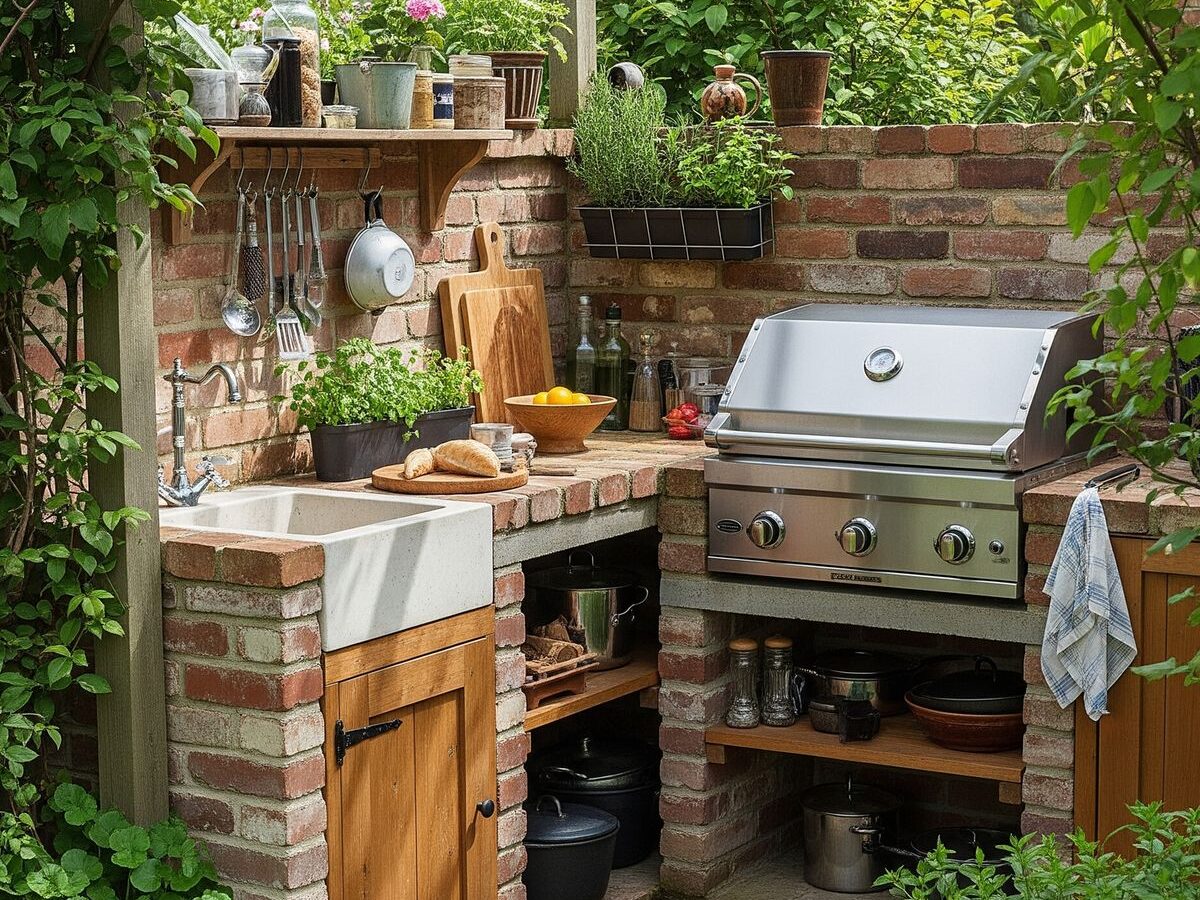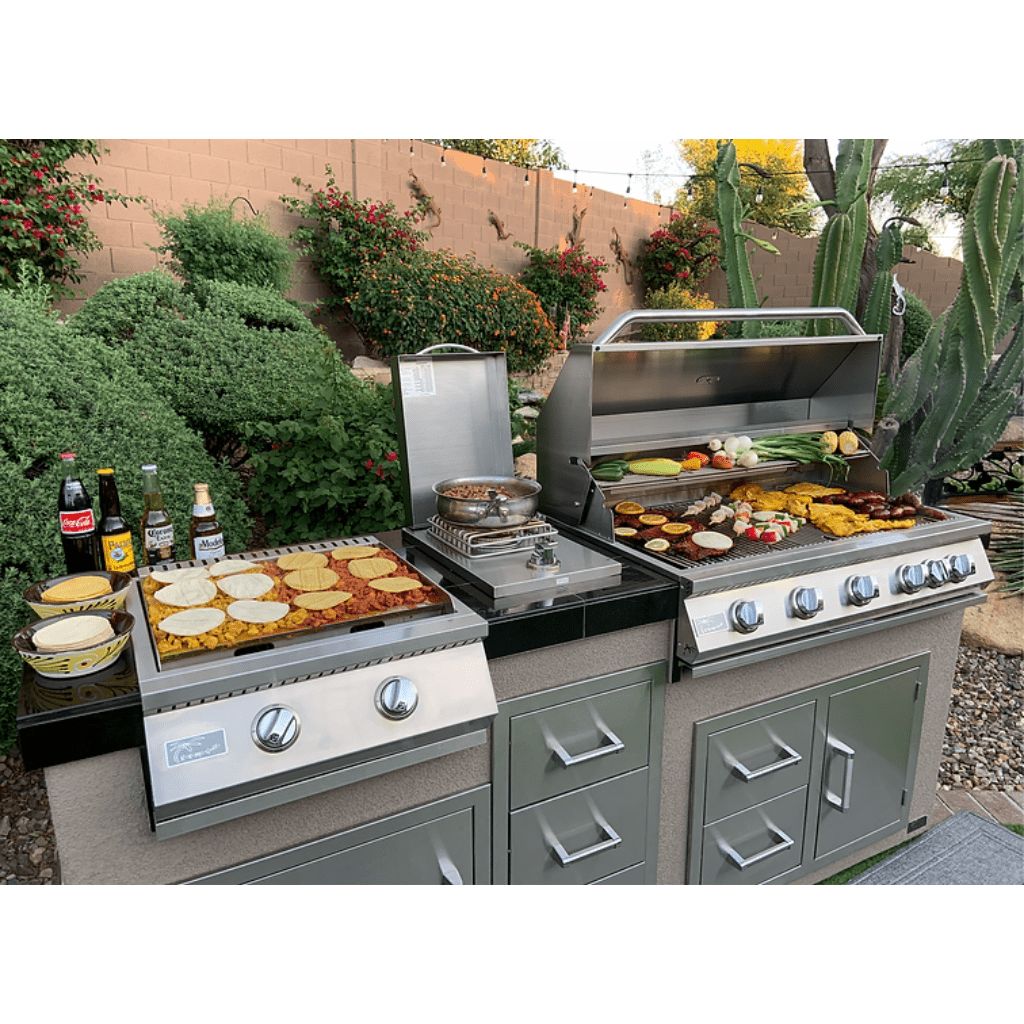Introduction
The smell of slow‑burning oak drifts over the fence. Neighbors pause, hoping for an invite. You smile, because tonight’s brisket will be that good. Yet great brisket does not happen by chance. It follows a clear plan that anyone can repeat.
Brisket gets irresistibly juicy when you pick the right cut, manage steady heat, and let the meat rest in its own juices.
Many guides drown you in jargon or skip key moments. This one stays plain and keeps each step tight so you can finish the cook without stress.

Which brisket cut guarantees tender backyard results?
Choosing brisket feels simple at first, until you see flats, points, packers, Select, Choice, Prime, grass‑fed, grain‑finished, and specialty breeds all in the same cooler. That choice decides how forgiving the cook will be.
A full 12–15 lb packer brisket graded USDA Choice or Prime gives the best balance of marbling, size, and moisture for backyard smoking.
Cut Grades at a Glance
| Grade | Marbling Level | Result in Smoker |
|---|---|---|
| Prime | High | Rich, forgiving |
| Choice | Medium | Juicy, balanced |
| Select | Low | Lean, risky |
A packer combines the lean flat and the fatty point in one muscle chain. The extra mass helps the meat stay damp during a long smoke. Look for a flexible brisket that bends over your hand. A thick flat at least one inch at the thinnest edge keeps slices from drying out. Wagyu is plush but costs more; Prime delivers 90 % of that tenderness at half the price. Check the “use‑by” date too—brisket benefits from 25–35 days of wet aging between packing and smoking. Finally, buy two. You will want a spare in the freezer once you taste the first.
How do you trim brisket for maximum smoke penetration?
Raw brisket comes wrapped in cryovac with stray fat and ragged edges. Trimming turns it into a clean canvas for seasoning and even cooking.
Trim exterior fat to about ¼ inch, square off thin edges, and remove hard kernels so smoke and rub can reach the meat evenly.
Key Trim Areas
- Hard top fat near the point
- Silver skin on the lean flat
- Thin flap at the corner of the flat
A boning or filet knife with a narrow, flexible blade lets you glide under fat without gouging meat. Keep the brisket half‑frozen for easy slicing; the fat firms up and peels away in sheets. Aim for a smooth aerodynamic shape that will let smoke swirl evenly. Avoid over‑trimming—leave enough fat to self‑baste. One smart trick: score the fat cap in a shallow crosshatch so seasonings grip better and rendered fat can escape. Always trim on a large board with a non‑slip mat under it. That setup keeps the knife stable and fingers safe.
What seasoning mix creates a rich, crunchy bark?
Seasoning can be as complex as competition rubs with fifteen spices, or as pure as Texas salt‑and‑pepper. Either way, bark depth comes from balanced salt, steady heat, and dehydrated surface protein.
A two‑to‑one blend of coarse black pepper to kosher salt, with optional garlic powder, builds classic peppery bark without masking beef flavor.
Simple Bark Builder
| Ingredient | Ratio | Purpose |
|---|---|---|
| Black pepper (16‑mesh) | 2 parts | Spice and crust |
| Kosher salt | 1 part | Deep seasoning |
| Garlic powder (opt.) | ½ part | Extra savor |
Shake the mix from 18 inches above the meat so grains land evenly. Let the brisket sit for 30 minutes. The salt begins to draw out moisture, helping the spices stick. Do not oil the surface; the fat cap renders on its own. Want more punch? Add a teaspoon of ground coffee or cocoa; both deepen color without turning bitter. Stick to coarse grains—fine table salt dissolves too fast and leaves patches. Most cooks think more rub means better bark. In truth, bark comes from dried meat proteins and smoke, so keep the layer thin enough that you still see red meat peeking through.

Which smoker temperature range keeps brisket moist?
Pit temperature does more than cook meat; it times fat render and collagen melt. Too cool and the meat dries before connective tissue breaks down. Too hot and the crust burns while the center stays tough.
Hold the smoker steady between 225 °F and 250 °F for the first six hours, then allow a gentle climb to 275 °F after wrapping to finish quicker without drying the bark.
Temperature Guide
| Phase | Target °F | Goal |
|---|---|---|
| Smoke (unwrapped) | 225–250 | Deep smoke, steady dryout |
| Finish (wrapped) | 260–275 | Speed collagen melt |
| Rest | 150–165 | Juice redistribution |
Use a leave‑in digital probe clipped at grate level, not on the dome. Weather shifts? Add a small split of seasoned oak to nudge heat up, or close the intake vent a fingertip to cool it. Avoid thick white smoke; you want thin blue wisps. That clean smoke leaves sweet notes, not soot. If your pit flares, spritz the brisket with plain water—this cools the bark and controls surface scorching. Charcoal kettle users can bank coals to one side with a drip pan full of hot water on the other. The water absorbs radiant heat spikes and stabilizes the chamber.
When should you wrap brisket to power through the stall?
At 150 – 165 °F internal, brisket moisture evaporates fast, cooling the surface and stalling the rise in temperature. Wrapping traps steam, softens bark, and speeds past the stall.
Wrap when the bark is dark mahogany and internal hits about 160 °F; use unlined butcher paper for breathability and flavor retention.
Wrap Options
| Material | Breathability | Bark Texture | Flavor Impact |
|---|---|---|---|
| Aluminum foil | None | Soft | Steam‑heavy |
| Pink paper | Moderate | Firm | Beef‑forward |
| No wrap | Full | Thick bark | Longer cook |
Before wrapping, mist the surface with beef tallow or stock. That adds moisture and keeps bark flexible. Fold the paper tight like gift wrap—no gaps for heat to escape. Label the top with a marker so you place the point end closest to the hotter side of the pit. Plan for the internal temp to climb about 40 °F in the next two hours. If time runs late, bump pit heat to 285 °F after wrapping; the paper protects the crust while collagen finishes. Remember to re‑insert the probe through the paper at the thickest part of the flat. A loose probe hole leaks juice; snug it by piercing at a shallow angle.
What probe reading confirms brisket is truly done?
Many cooks chase 203 °F like gospel. Yet every brisket differs in fat, age, and connective tissue. Feel matters as much as numbers.
Probe at the thickest part of the flat; when it slides in with butter‑like ease at around 200 – 205 °F, the brisket is ready.
Feel vs. Temperature
| Internal °F | Typical Texture | Action |
|---|---|---|
| 190 | Tight | Keep cooking |
| 200 | Softening | Start probing often |
| 205 | Like warm butter | Pull from smoker |
Use a thin needle probe, not a thick instant‑read, to avoid juice loss. Insert sideways, parallel to the grain; this lets you gauge both flat and point. Check multiple spots—edges finish sooner than the core. If one area feels tough at 205 °F, wait ten minutes; collagen melt can lag while temp plateaus. Needs more time? Keep wrapped and return to heat in 15‑minute bursts. Better to push a brisket a bit farther than to pull it early; underdone collagen chews like rubber, while overdone brisket still tastes fine once sauced. Write down each cook’s finish temp and feel—it will guide future smokes.
Why is resting essential for juicy, flavorful slices?
Pulling brisket off the pit still means water inside is near boiling. If you cut too soon, steam rushes out and meat dries.
Hold wrapped brisket in an insulated cooler or a 150 °F oven for two to four hours until the internal temperature drops below 160 °F; juices redistribute and fibers relax, giving tender, moist slices.
Rest Time and Results
| Rest Minutes | Internal °F | Slice Quality |
|---|---|---|
| 30 | 185 | Wet board |
| 120 | 165 | Juicy, stable |
| 240 | 150 | Peak tenderness |
Place the wrapped brisket on a folded towel inside a dry cooler. Fill empty space with more towels so heat does not escape. A probe alarm set to 160 °F tells you when to serve. During the rest, connective tissue firms enough to hold slices yet stays soft to bite. When ready, unwrap over a rimmed tray to catch rendered tallow; drizzle that liquid gold over chopped pieces or freeze it for beans. Slice across the grain of the flat at pencil thickness. Turn the point 90 degrees before slicing to keep the grain short and tender. Serve at once. Leftovers freeze well in vacuum bags with a splash of beef broth.

Conclusion
Great backyard brisket is not a mystery; it is a chain of simple choices carried out in order. Pick a well‑marbled packer, shape it for even heat, season boldly yet simply, and guide it through steady smoke. Wrap when bark sets, probe for buttery feel around 203 °F, then let the meat calm down before slicing. Follow these seven steps and your yard will soon fill with friends who swear you run the best smokehouse in town—no reservations needed.

